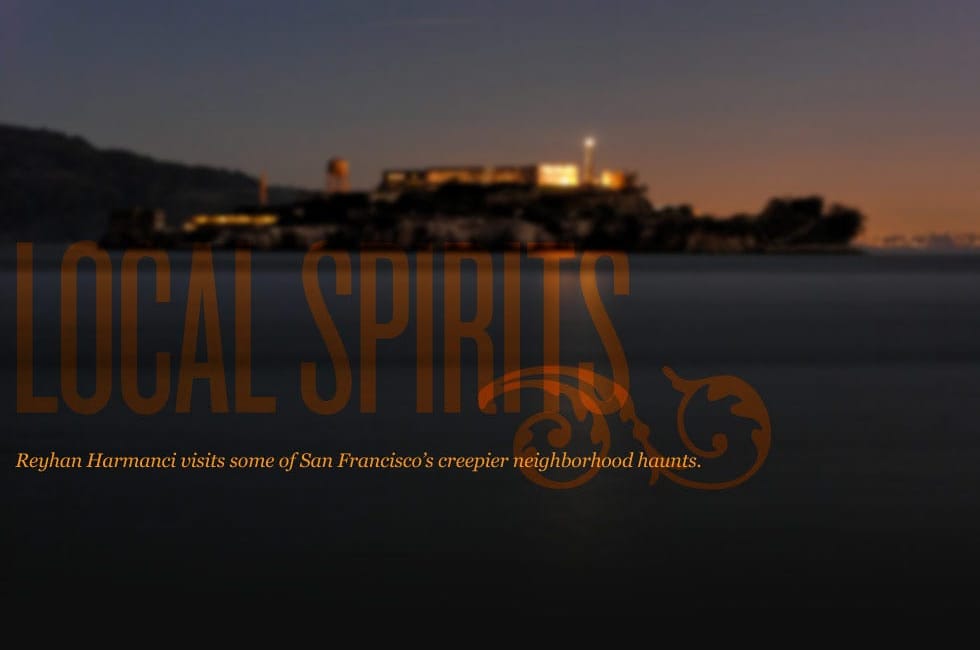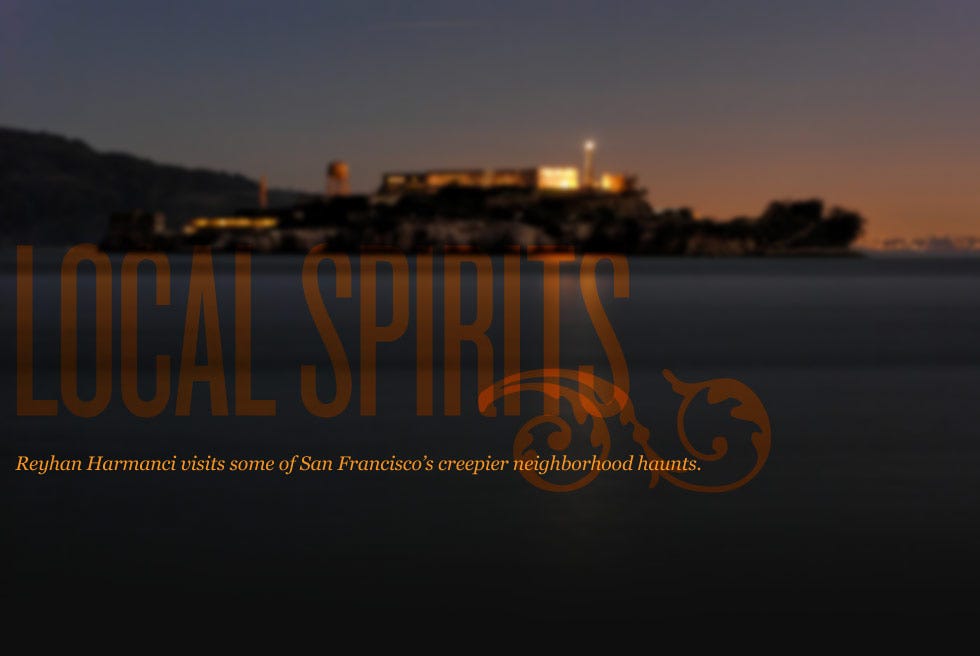
By Reyhan Harmanci
San Francisco is known for many things — organic food, fog, sandals-with-socks, tech companies, dive bars. But it’s also a great town for ghosts. With such a violent and colorful Barbary Coast past, as well as being home to modern blights like drive-by shootings and Golden Gate suicides, untimely deaths abound. While many of the most famous locales are outside of the city
proper — like Moss Beach Distillery and U.S.S. Hornet Aircraft Carrier in Alameda — S.F. has a lot to offer the aspiring ghost hunter. As proud owner of all 33 volumes of 1980s classic Time-Life “Mysteries of the Unknown” series (remember the commercials?), I’ve always been fascinated by the paranormal. For this mission, I decided to look around S.F. for some ghosts.
Haunted Haight
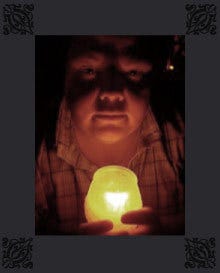
The best introduction to local spirits is Tommy Netzband, head of the San Francisco Ghost Society, founder of Haunted Haight Walking Tour and a civic leader in ghostbusting. Tommy uses the proceeds of his tours to fund the Ghost Society work — namely investigating ghosts in personal residences and businesses for free.
We began our night with a chat at All You Knead, a diner in the upper Haight. Tommy was obviously a regular, as he chatted up the waitress (“Heard anything on the stairs lately?”) and we settled into a booth. Opening his large bag, he methodically explained his gadgets. The first was a small wand with a row of colored lights called an EMF reader, which measured electromagnetic waves. Tommy explained carefully that he approached ghost hunting from a skeptical point of view — he would measure the EMF readings upon entering a space that was rumored to have activity to see what the baseline electrical energy was like. Fluctuations had to be seen in the overall context of the room. It also could be used as a communication device if you held down the button and asked spirits to make the light flash, Morse-code style.
The next object was “the puck,” a small device that plugs into a USB port and does something rather unbelievable: analyzes a bunch of different indexes (EMF, temperature) and then translates that data into words. Even Tommy professed to have no real clue how the inventor makes this happen. After a few moments of data collection, the computer, in computer voice, spits out random words. We waited to hear clues like “cotton,” “gate,” “mother.” It bore an uncanny resemblance to a talking magnetic poetry machine.

We took the gear with us to one of the primary stops on Tommy’s tour, a haunted sidewalk. A third of the way up from Haight St. on Ashbury, a lovely little stretch of pavement flaked by trees and plants marks the spot where Larry Watts, 15, was shot in 1969–“running for his life,” Tommy intoned. Apparently, a disturbed man yelled at the group of four young guys walking down the street and then opened fire. Only Watts died. Hence, “the running man” has been heard by a number of Haight residents, as well
as people who have lived in the street-level apartments nearby. After futzing with the EMF reader, and asking some questions like “Larry, are you here? Blink once for yes, twice for no?” to the wand, with underwhelming results, Tommy turned to the puck. Out came the netbook and the cord. The air was certainly chilly, the street beautifully lit, the foot traffic light. Time for some ghosts! Alas, the puck only offered more mystery. “Cotton” seemed to be the word of the day.
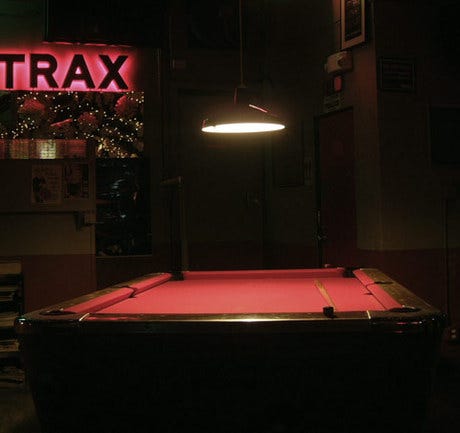
But Tommy was sanguine. At no time did he promise that we’d actually experience anything otherworldly– some people are more sensitive to these things than others and I’ve long suspected that I have the sensitivity of a potted plant when it comes to ghosts. The real rewards, Tommy said, come from the historic research. When he hears about a haunting, he heads for the library and asks around the neighborhood and more often than not, “authenticates” a reported ghost sighting with evidence of tragic past. He has a fantastic story about another Haight Street locale, Trax bar, for instance, that was the result of dedicated research and a bit of luck involving an old gun and a group picture. To learn more, you’ll just have to take the tour.
Haunted Hotel
Many hotels in San Francisco are rumored to be haunted, but the Hotel Majestic stands out: it has the temerity to announce on its web site that there is a resident ghost. To wit: “It is said that one room in particular may spook people when the bathtub mysteriously fills with water. Our ghost likes to walk our hallway late at night, with keys clanging along the walls. Another story involves a production manager who was staying here while filming ‘Sweet November.’ Late at night she reported to our front desk staff that her bed was shaking and thought we were having an earthquake, which we were not…. it is believed that the daughter of the first owner refused to leave the building after it was sold.”
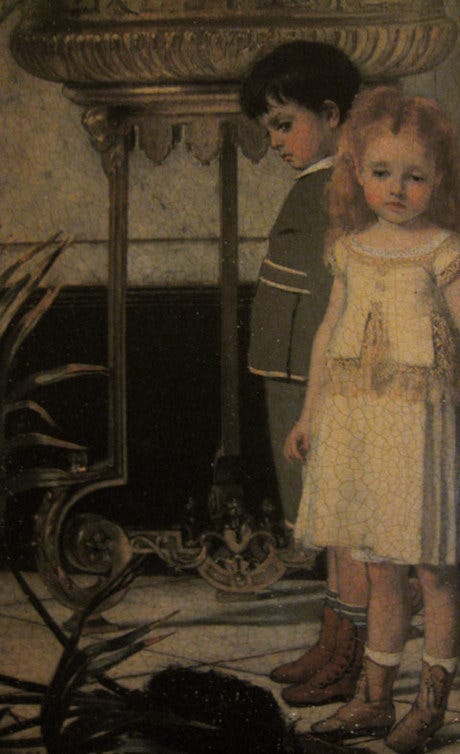
I requested room 407, the most haunted room, but had to settle with the room next door, 408. “That one’s haunted, too,” the woman at the front desk assured me. “My roommate used to have my current job here and once she was delivering pillows to that room when she felt two hands on her shoulders, pushing her back. She was so scared.” Good enough for me.
The room was actually more like a suite. Modern touches — two TVs — competed with older furnishings. It was one thing to read about the friendly ghost, but the testimony from the front desk suddenly made everything so much creepier. One of the two closet doors wouldn’t shut, and would seem to keep opening farther. The windows were open, making the sheer curtains billow. Even the mimeographed paintings — like the one of the young girl — seemed ominous. The prospect of spending the night there suddenly felt overwhelmingly scary.
But, full disclosure, I didn’t go to the hotel alone: I brought my live-in boyfriend. He seemed amused by my skittishness. After one or two little jokes (turning around with an Edvard Munch-like silent scream), he took a hint. I was spooked.
After dinner, we settled in for the night. Two episodes of the “Rachel Zoe Project” later, the chill had left the room and we were ready for bed. I listened for any extra knocking and I brought my compass — courtesy of Tommy — but nothing strange seemed afoot. After some reading, we turned off the lights.

At around three a.m., I woke up to Patrick covered in cold sweat. He had had a nightmare that the floor was made of ants and the room was caving in. This, of course, suddenly made “The Shining” seem like a preamble to the horror we were about to experience. I pulled up the covers, closed my eyes, and had a strange waking dream that I was talking to a male ghost encased in a suit of armor. (A response to Rachel Zoe’s style tips?) I told the ghost to go away. The next time I opened my eyes, it was 8 a.m. The bathtub wasn’t full of water, the compass was level, no items were moved. Nothing had happened besides a bad night of sleep. When I checked out of the hotel, I asked the man behind the counter if he knew what haunting’s backstory was. “Isn’t on the web site?,” he said, barely looking up.
Pet Cemetery
Rents may have soared during the dot com boom but San Francisco has long been precious real estate. Too precious, in fact, to house the dead. In the 1930s and 1940s, all the cemeteries in city limits — save Mission Dolores — were moved to Colma (where 2 million dead currently reside, in contrast to the approximately 2,000 living) or the East Bay.
However, two gravesites that were on federal property in the Presidio remain, one for human and one for animals. Formerly part of the Army base, the Presidio Pet Cemetery is officially cared for by veteran group Swords to Plowshares. It dates back to the 1950s, according to the National Park Service’s web site and originally thought to house cavalry horses. The cemetery lot is technically full, although I’ve heard rumors of people sneaking in at night to bury their beloved pets.
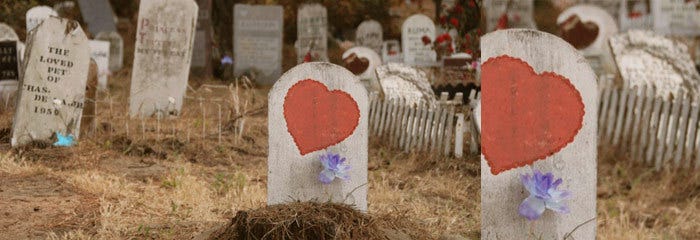
I’ve also heard that it’s haunted. One chilly evening, I went with two friends to pay my respects. In the dark, it was rather hard to find — it’s a small plot underneath the bridge, with no foot traffic. Amid the clanging of cars above us, we worked our way through the little gravestones. Determining the level of spirit activity quickly fell by the wayside — it was all just too cute. Handmade notes stood next to professionally carved stones, with names like Whiskers, Champagne, Stoli, Fluffy, Little Bit, etc. Birds, iguanas, dogs, rats, cats, turtles and more all took their place as beloved friends and family members. The headstones veered between stoic and verbose, silly and profound. Why aren’t more human cemeteries this personal?
One favorite stone read “We knew love, we had this little dog.” Another, for “Killer,” said “To love a lifetime, no matter long, is never enough.”
But after 20 minutes or so, the highway noises and isolation got to us. We packed up our candles, said goodbye to cemetery and made our way out of the Presidio. The spot may well have some ghost dogs lurking around, but it’s about as a scary as a basket of kittens.
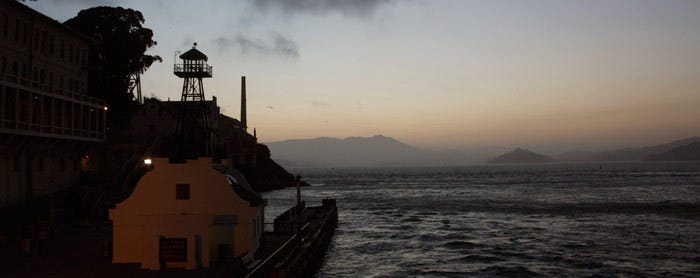
Alcatraz at Night
It was a great night to go to the Rock, dark and cloudy, with the fog rolling in. As the last person on the completely full ship that departed at 6:45 p.m. on the nose — the night tours are often sold out weeks in advance — I scurried onto the deck and listened to the tour guide deliver some facts. Alcatraz is only a mile and a half away but currents and tides made it almost impossible to survive escape attempts. The main structure was first built as a military prison in 1847 and then used as a federal prison starting in 1934, it got too expensive and rundown to operate and was shut down in 1963, and so it became a national park after an American Indian protest takeover from 1969–1971. Famously reserved only for the incorrigibles, Alcatraz was not a fun place to serve time. Amenities were few and amusements nonexistent.
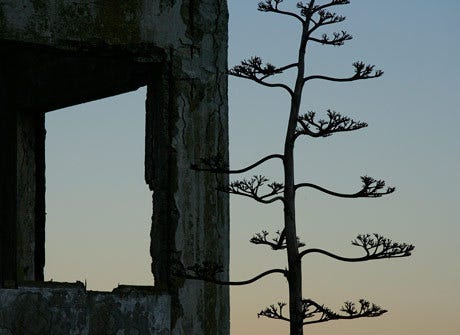
With such a long history of imprisonment on such a lonely bit of land, it’s not surprising that Alcatraz is widely reputed to be America’s most haunted prison. On the short boat ride, I reminded myself what the internet told me to watch out for: the bloody prison riot in 1946 that killed two guards and a prisoner led to rumors that Cellblock C has spirits; the torn-down lighthouse has been known to appear as a ghostly vision; the grounds have known to be host to strange groaning, bad smells,
random cannon shots and the sensation of being watched. The most haunted spot of all is Cellblock D, where misbehaving inmates would be thrown into “the Hole,” one of six dark, dank cells without sunlight. Mattresses were taken away during the day and inmates weren’t allowed to go the yard, the showers and had no reading material. The maximum amount of time a prisoner could spend there was 19 days; insanity was a real risk of longer bouts in isolation.

The walk up to the actual prison was haunted, for me, by an earthly menace: standing next to a very loud man cracking jokes over the tour guide, whose canned spiel was itself irritating. As we passed by the prison morgue, I felt a chill, and then had to walk very fast to avoid more of loud guy’s monologue about how awesome it would be to throw a party in the prison. Ugh. Luckily, Alcatraz requires everyone to take a self-guided audio tour. After queuing up in the shower area, we walked through the doorway into the prison itself. It was now dark outside. As I slipped on my headset, I was distracted by a racket above. Cell doors were opening and closing above me, seemingly automatically. The place was definitely creepy.

Being on the last tour of the day had several distinct advantages, the biggest one being that there were no groups coming up behind you. After travelling with a herd into Cellblocks C and D, listening to prisoner and guard voices talk about escape attempts and day-to-day life, I looped back around into the Hole. It was an unusually open part of the prison: all six cells were available for entry. I had gone inside them the first time, but in the empty gallery, I hesitated. My boyfriend, also on the tour, had no trouble disappearing into the darkness, happily trying to close the door behind him. Instead, I walked along the rows of open doors. A few minutes earlier, in the prison hospital upstairs — which looked to be ripe for a horror movie involving grisly experiments — an Alcatraz worker told me that psychics sometimes refuse to enter the building. The atmosphere was heavy with sadness, if not the paranormal.
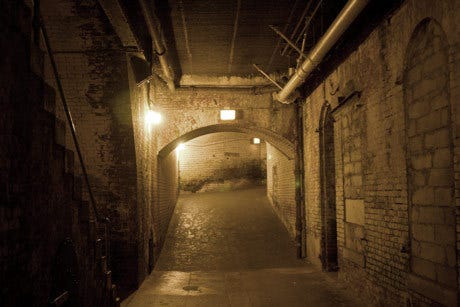
On the way back down the hill, another tour guide told the story of Al Capone’s sad stay on the Rock — after being brought down for tax evasion, he went crazy with syphilis (although oddly the tour guide refused to say the word “syphilis”). It seemed like an appropriate end to my quest to see haunted San Francisco. This city is teeming with local legends, romantic larger-than-life figures. You don’t need an EMF reader or the Puck to find evidence of this. As Loud Guy held forth on his plans to hold a concert inside the prison while we waited for the boat to come pick us up, I found myself wishing for an errant cannon shot or some loud poltergeist action. Ghosts can be preferable to people sometimes. One day, maybe I’ll see one.
Design: Chris Nyffeler



